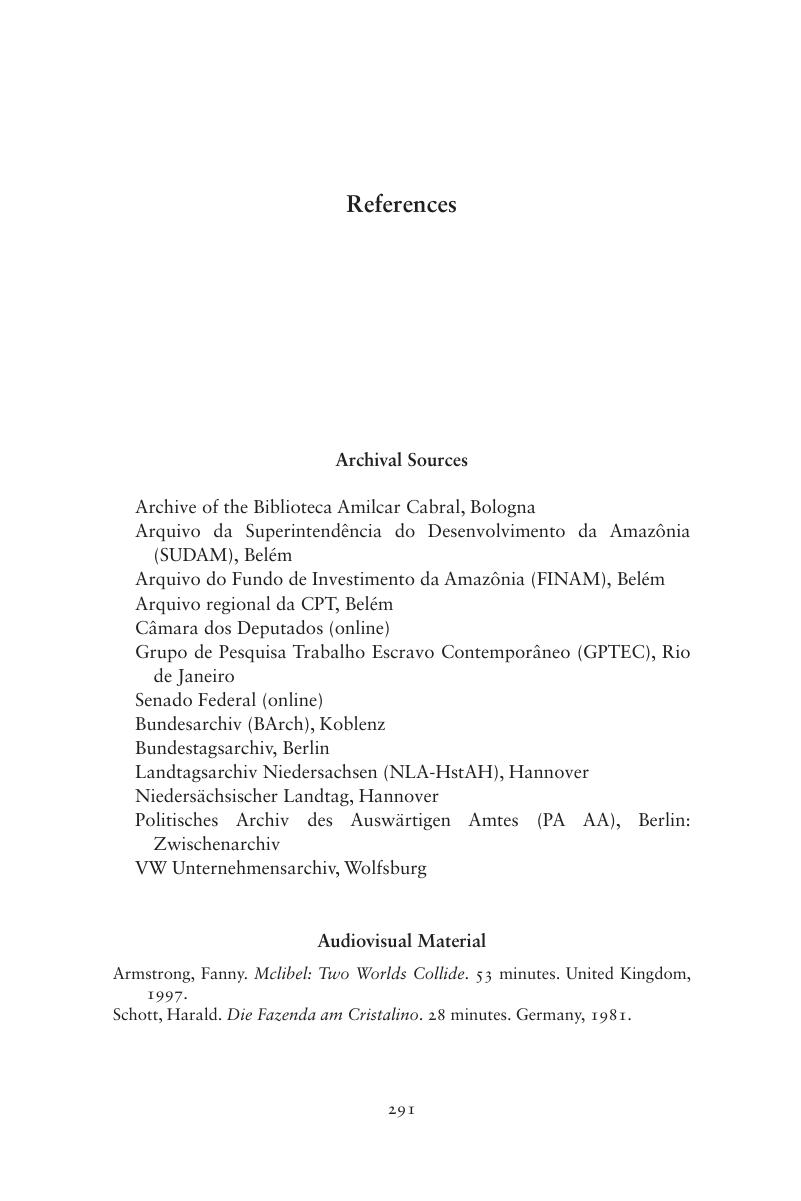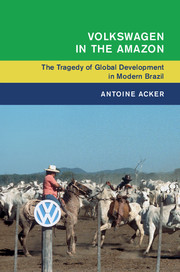Book contents
- Volkswagen in the Amazon
- Global and International History
- Volkswagen in the Amazon
- Copyright page
- Contents
- Figures
- Preface and Acknowledgments
- Acronyms
- Introduction
- 1 Setting the Stage: The Amazon as a Horizon
- 2 The Making of a Model Ranch (1973–1976)
- 3 Development in the Age of Scarcity (1976–1983)
- 4 Out-of-Date Modernity: Forced Labor at Cristalino (1983–1986)
- 5 Cristalino’s Unhappy Ending
- References
- Index
- References
References
Published online by Cambridge University Press: 12 October 2017
- Volkswagen in the Amazon
- Global and International History
- Volkswagen in the Amazon
- Copyright page
- Contents
- Figures
- Preface and Acknowledgments
- Acronyms
- Introduction
- 1 Setting the Stage: The Amazon as a Horizon
- 2 The Making of a Model Ranch (1973–1976)
- 3 Development in the Age of Scarcity (1976–1983)
- 4 Out-of-Date Modernity: Forced Labor at Cristalino (1983–1986)
- 5 Cristalino’s Unhappy Ending
- References
- Index
- References
Summary

- Type
- Chapter
- Information
- Volkswagen in the AmazonThe Tragedy of Global Development in Modern Brazil, pp. 262 - 290Publisher: Cambridge University PressPrint publication year: 2017



